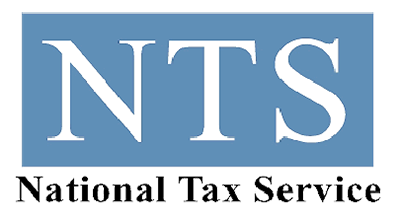by | Apr 30, 2020 | Tax Tips and News
The Internal Revenue Service says it had to delay the Special Enrollment Examination (SEE) tests for Enrolled Agents that was slated for May due to the coronavirus pandemic.
Prometric, the company that does SEE testing for the IRS has closed its testing centers in the US and Canada through May 31 because of the pandemic. Those who had tests scheduled in May will be contacted by the company to reschedule.
“If you have a SEE appointment scheduled in May, you should have received an email informing you that your appointment is cancelled,” the IRS website instructs. “A Prometric representative will try to contact you once by telephone to reschedule your appointment. If Prometric can’t reach you by telephone, they will reschedule your appointment and send you an email confirmation with your new appointment information.”
The IRS EA page recommends that testing candidates can call Prometric at 800.306.3926 or 443.751.4193 if the new date and time don’t work for them and to ensure rescheduling fees are waived. Those lines are open Monday – Friday 8 a.m. to 9 p.m. Eastern Time.
International testing is also on hold.
The EA web page also shows that the international testing window scheduled for June 15-29 has also been cancelled. International candidates can, however, schedule during the remaining windows, in August and November in 2020, and in February 2021.
The IRS stresses that all information about the examinations is subject to change “in the interest of ensuring the health, safety and well-being of SEE candidates as well as Prometric staff.”
Besides delaying examinations, the IRS has also decided to extend the two-year carryover period for SEE candidates. Generally, those who pass a part of the EA examination can carry over a passing score up to two years from the date they passed that part of the test. To give candidates more flexibility in testing during these uncertain times, the IRS has extended the carryover period from two years to three.
This applies to any examination parts that had not expired as of Feb. 29, 2020. Only those candidates who passed a part of the examination Feb. 29, 2020 or earlier, will now have three years from the date they passed a part of the examination to pass the remaining parts. For example, if a candidate passed Part 1 on Nov. 15, 2019, they now have until Nov. 15, 2022 to pass parts 2 and 3.
The IRS says SEE candidates with additional questions can call 800.306.3926 or 443.751.4193 for additional information.
– Story provided by TaxingSubjects.com
by | Apr 29, 2020 | Tax Tips and News
It’s not often that a federal tax gets high marks for its results, but the Tax Foundation points to one in particular that hits the bullseye. The foundation’s Ulrik Boesen writes that an excise tax on firearms and other hunting and fishing gear is feeding tax proceeds back into projects that ultimately benefit outdoorsmen paying the tax.
In March, David Bernhardt, the Secretary of the Interior, announced that the U.S. Fish and Wildlife Service will distribute nearly $1 billion as a result of this excise tax. The proceeds will go to state and territorial fish and wildlife agencies for conservation and recreation projects.
The source of this windfall, Boesen writes, is “a rather well-designed excise tax” that is paid by anyone who buys firearms or other hunting or fishing equipment. The tax goes all the way back to 1937, when the National Firearms Act went into effect. Archery items were added to the list of taxable items in 1972.
The excise tax on fishing equipment was established by the Dingell-Johnson Act in 1950.
How does the tax work?
Here’s how the parts of the excise tax work.
Pistols and revolvers are taxed at 10% of their value; ammunition and other types of firearms are taxed at 11%; and archery items are taxed at 11% of value — except for arrow shafts, which are taxed at 39 cents per shaft. In all these cases, the tax is collected at the manufacturer or importer level. Fishing gear is taxed at 10% of its value, also collected at the manufacturing level.
When you put it all together, Boesen writes, the excise tax covers everything from arrows to bullets to fishing tackle.
The revenue raised by this tax is collected by the federal government, allocated to the Wildlife Restoration Fund and the Sportfish Restoration Fund, then handed over to the states’ conservation programs. The money is apportioned based on land area of each state and the number of hunting and fishing licenses it issued.
Recreational boaters also pay into the fund through the fuel taxes on motorboats and small engines. By design, the tax basically works as a user fee for hunters and fishermen, where the purchase of equipment acts as a stand-in for the buyer’s use of recreational outdoor activities. In addition to the federal tax, states often sell licenses to further support wildlife management and conservation.
Figures supplied by the Tax Foundation show Texas leading the states in the amount of tax proceeds it receives. The Lone Star State raked in more than $46 million for it conservation programs; in the East, the leader was Pennsylvania, which tallied over $29 million.
A well-tuned machine?
Because the tax respects the benefit principal so well, Boesen writes, the tax has the general support of America’s sporting and outdoor community, and that teaches us some lessons about well-designed excise taxes.
“While some may consider a well-designed excise tax an oxymoron, excise taxes can be an effective tax tool. A guiding principle is that excise taxes should only be levied when appropriate to capture some externality or to create a “user pays” system—not as a general revenue measure,” Boesen writes. “Due to their narrow base, they are not a sustainable source of revenue for general spending priorities.”
Sadly, not all excise taxes are so well crafted in light of the benefit principal or even the principles of sound tax policy. Some states tax car rentals to fund project like sports stadium construction and amateur sports. Colorado taxes sports betting in order to fund water conservation. And Philadelphia taxes soda to fund educational programs.
Boesen says revenue from excise taxes should be “appropriated to relevant spending priorities,” as with the outdoor equipment example. He adds, excise taxes should be constructed according to the principles of sound tax policies, meaning they should have neutral equitable rates, clear definitions and simple collections.
A well-constructed tax can take a seemingly external issue and tie it to the direct interests of those who pay the tax. An excise tax on gambling that funds gambling addiction prevention programs is one example.
A gas tax can also be a good example of a tax acting as a user fee. The purchase of fuel acts as a proxy for road usage—the more gas you buy, the more you drive on the roads.
Some excise taxes are designed to decrease the incentive to consume a product. Often called sin taxes, these are frequently levied against alcohol, tobacco and, more recently, marijuana. Of course, Boesen writes, a single excise tax can also support more than one of these strategies.
– Story provided by TaxingSubjects.com
by | Apr 27, 2020 | Tax Tips and News
The Internal Revenue Service wants to make sure taxpayers timely receive their Economic Impact Payments, which is why they worked with the tax industry to develop online reporting and tracking tools for IRS.gov. While non-filers receiving Supplemental Security Income (SSI) and Veterans Affairs (VA) benefits are scheduled to automatically get a $1,200 Economic Impact Payment, the IRS says beneficiaries need to report qualifying dependents before May 5, 2020, to receive an additional $500 per qualifying child with their EIP.
What is the $500 dependent payment?
With the CARES Act, Congress authorized $1,200 Economic Impact Payments to help Americans facing financial hardship due to the coronavirus epidemic. The legislation also included a provision designed to give families extra help: Eligible filers receive an additional $500 payment per qualifying dependent. The recent IRS press release is the agency’s latest effort in its “Plus $500 Push” campaign.
Why do SSI and VA beneficiaries need to report dependents?
While non-filers who receive SSI and VA benefits will automatically receive a $1,200 payment in the coming weeks, the IRS does not currently have information related to those Americans’ qualifying dependents. So, beneficiaries need to supply the IRS with additional information to receive the “plus $500.”
How do SSI and VA beneficiaries report dependents to the IRS?
The agency developed the Non-Filers: Enter Payment Info Here tool on IRS.gov to help Americans who don’t normally file a tax return conveniently report their EIP qualifying information. To find it, go to IRS.gov and click the upper-left-hand link titled “Non-Filers: Enter Payment Info Here.”
Why is May 5 the deadline for SSI and VA beneficiaries to report dependents to the IRS?
Since the IRS is automatically sending SSI and VA beneficiaries their $1,200 Economic Impact Payment in a few weeks, the only way they will get the additional $500 payments at the same time is if they report that information to the IRS by May 5. Here’s another wrinkle: They will not be able to use Non-Filers: Enter Payment Info Here to report qualifying beneficiaries after the deadline.
Can SSI and VA beneficiaries who miss the dependent reporting deadline still receive the additional $500 payments?
SSI and VA beneficiaries will still be able to receive the additional $500 payments per each qualifying child if they report those dependents to the IRS after May 5, 2020. Those payments will simply come separately from the initial $1,200 EIP.
Source: IR-2020-81
– Story provided by TaxingSubjects.com
by | Apr 24, 2020 | Tax Tips and News
The CARES Act removes an ACA limitation on using FSA, HSA, and HRA funds to pay for over-the-counter medication.
The CARES Act—famous for authorizing the $1,200 Economic Impact Payments that Americans have begun receiving—also includes important, coronavirus-related changes for flexible spending accounts (FSAs), health savings accounts (HSAs), and health reimbursement arrangements (HRAs).
This isn’t the first time that changes have been made to tax-advantaged health plans during the coronavirus outbreak. As noted in a previous Taxing Subjects blog, the IRS issued a notice allowing taxpayers with high-deductible health plans to pay for COVID-19 medical care with funds in a qualifying HSA account. NPR’s Selena Simmons-Duffin’s reports that this CARES Act change further expands how policy holders can spend funds in their FSA, HSA, or HRA by classifying other-the-counter (OTC) medication and medical products as reimbursable expenses.
Essentially, the CARES Act removes an Affordable Care Act provision stipulating that only prescribed medication qualified to be purchased with FSA, HSA, and HRA funds—disallowing OTC meds. Simmons-Duffin speculates that this change will help the policy holders “[stock] up on fever reducers and cough medicine as the coronavirus spreads around the country,” something that could affect “‘nearly 60 million Americans.’”
Depending on the length and severity of the COVID-19 outbreak, Congress could pass further tax relief measures in the coming months. Just this week, the House of Representatives seems poised to pass a bill providing relief to small businesses. For the latest coronavirus tax relief information, be sure to regularly check “Coronavirus Tax Relief and Economic Impact Payments” on IRS.gov.
Source: NPR.org
– Story provided by TaxingSubjects.com
by | Apr 24, 2020 | Tax Tips and News
The U.S. Treasury Department and the Internal Revenue Service say they’ve delivered 88 million stimulus payments to taxpayers during the first three weeks of the program.
As of April 17, the IRS issued 88.1 million of the Economic Impact Payments (EIPs) to individual taxpayers across the U.S. The agency says more payments are continuing to be delivered each week.
“The IRS, Treasury and partner agencies are working non-stop to get these payments out in record time to Americans who need them,” said IRS Commissioner Chuck Rettig. “Tens of millions of people across the country are receiving these payments, and millions more are on the way. We encourage people to visit IRS.gov for the latest information, FAQs and updates on the payments.”
In all, more than 150 million payments are expected to be sent out. Millions of individuals who do not typically file a tax return are also eligible to receive the payments. The payments are automatically sent out to people who filed an income tax return in 2018 or 2019, and those who receive Social Security retirement, survivor or disability payments (SSI), or Railroad Retirement benefits. Payments are also going out to Supplemental Security Income (SSI) and Veterans Affairs beneficiaries who did not file a tax return in the last two years.
By the Numbers
As of April 17, California showed the most EIPs, receiving over 9 million payments. Texas wasn’t far behind with more than 7.8 million payments received. On the other end of the scale were Wyoming and Vermont, with 166,000 and 188,000 payments respectively.
Looking at the big picture, the Treasury Department says the 88.1 million Economic Impact Payments totaled more than $157 billion in relief funds.
Need More Help?
The IRS website, IRS.gov, has a variety of online tools and other resources to help individual taxpayers and businesses navigate the Economic Impact Payments and get needed information about EIPs and other relief provisions.
The IRS says it is seeing a variety of questions coming in about Economic Impact Payments, ranging from eligibility for payments to timing. The IRS has developed a list of Frequently Asked Questions (FAQs) for an overview; the list is updated frequently. Check the FAQs often for the latest updates and additions’ many common questions have already been answered on IRS.gov and more answers are being developed every day.
– Story provided by TaxingSubjects.com





